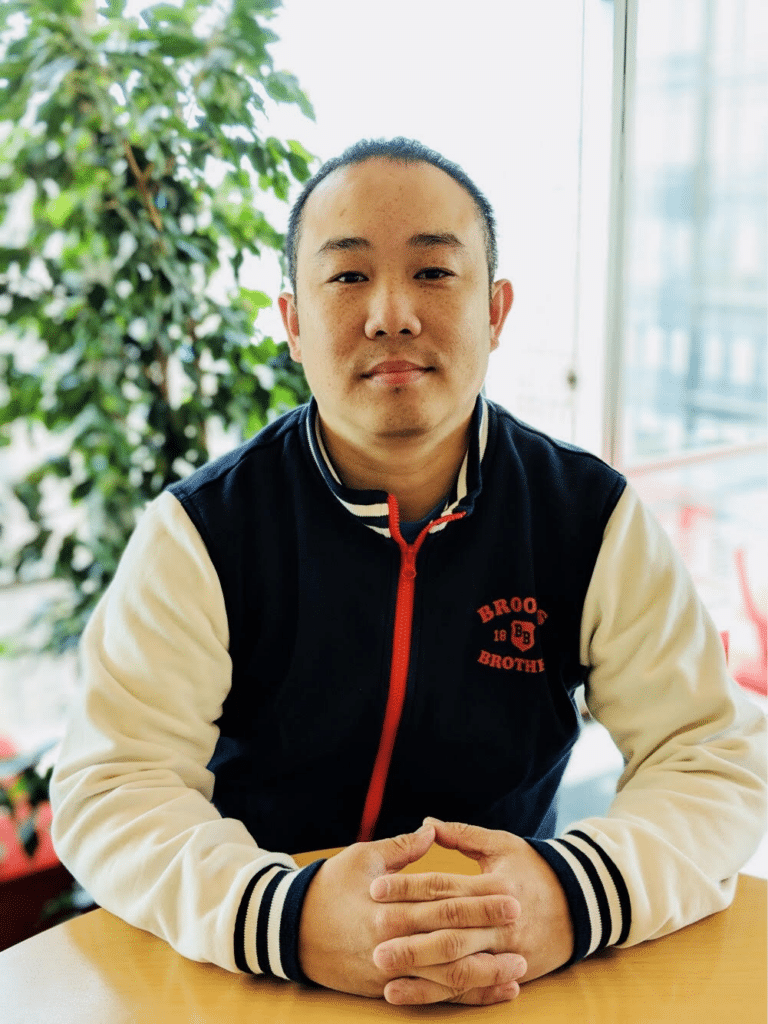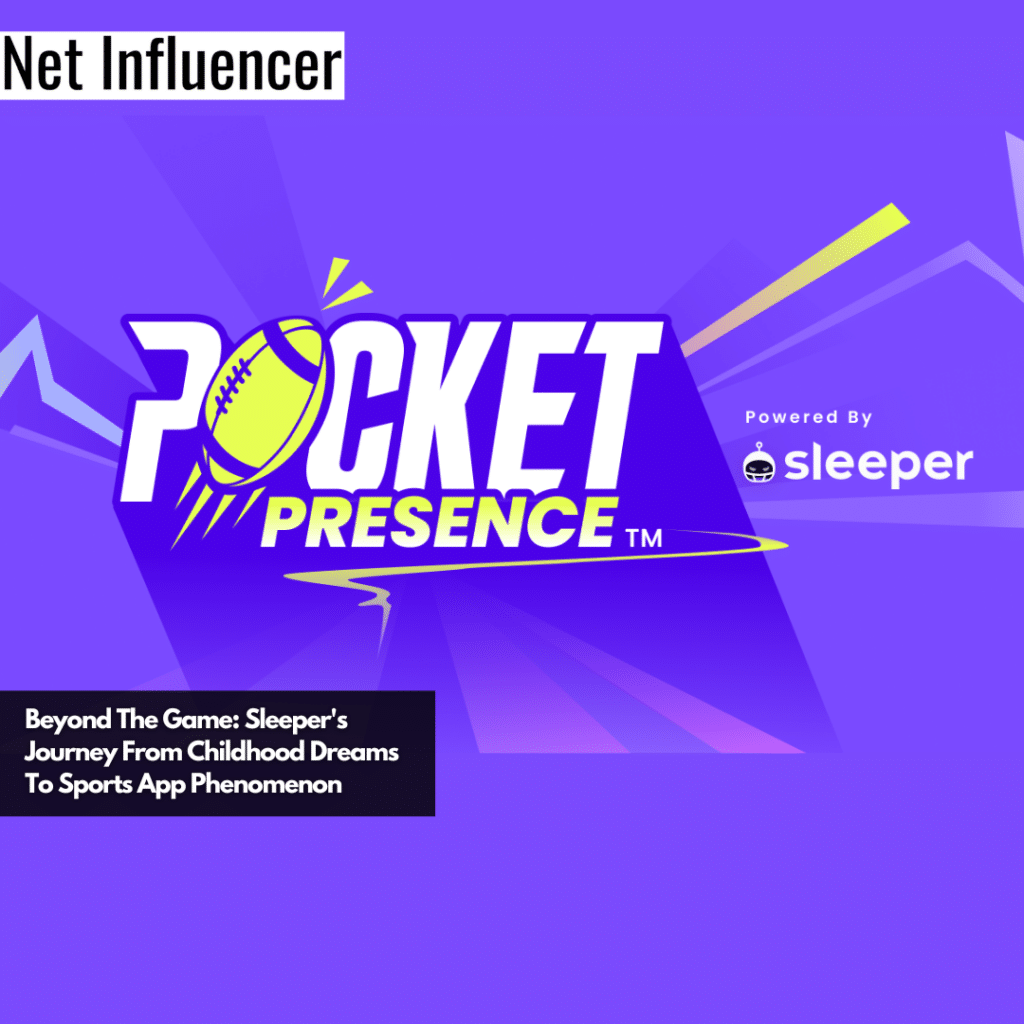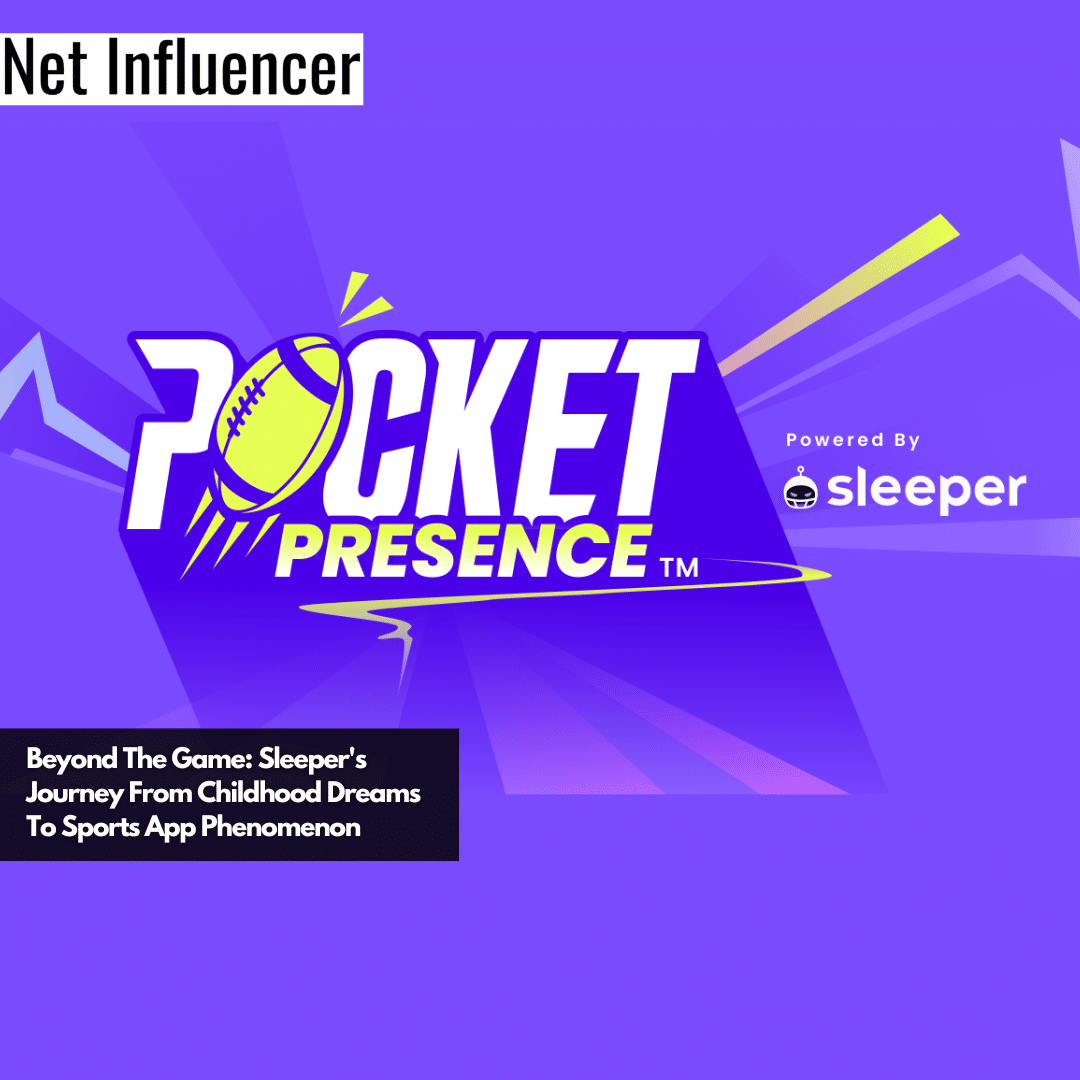Technology
Beyond The Game: Sleeper’s Journey From Childhood Dreams To Sports App Phenomenon

Sleeper, a leading fantasy sports app, is expanding into media to enhance user engagement. Originally started by childhood friends and co-founders Nan Wang and Weixi Yen out of a California garage, Sleeper has grown to 5 million users. Its beginnings tie to Wang and Yen’s lifelong bond over sports.
“Sleeper started out of a garage in Redwood City, California, with my childhood best friend,” Nan recalls. This friend, co-founder, and CTO Weixi Yen has been a significant part of Nan’s life since they were five, growing up as neighbors in the student housing at Washington State University, where their parents attended graduate school. “Both of us have been lifelong sports fans,” Nan shares, reflecting on a bond forged through their mutual love for sports. “Before we even knew how to speak any English, the way we made friends was we would play kickball and tether ball with the other kids in the student union,” Nan reminisces.
Nan and Yen’s enduring friendship, maintained through sports even after Nan moved away in third grade, was the inspiration behind Sleeper. “We used our love for sports as a way to stay in touch,” Nan explains. Their journey culminated in the creation of Sleeper, conceived not just as a fantasy sports app but as a platform to bring sports fans together. “The mission was to solve social for sports,” Nan states.
As Sleeper grew, so did its vision. Now headquartered in Las Vegas, with a team of 85, Sleeper has over 5 million active users and is continually expanding. “We’re a product-centric company and have grown the platform based on that kind of social mission,” Nan asserts.

Sleeper Media’s Role in the Fantasy Sports Ecosystem
“Sleeper Media adds deeper engagement for our audience in ways that are very natural for what they do already” Nan explains. He aims to deepen user engagement by integrating content consumption seamlessly with the fantasy sports experience.
Currently, Sleeper users find themselves navigating away from the app for additional content like news, podcasts, or social media discussions related to their fantasy leagues. Nan sees this as an opportunity for Sleeper Media to fill a gap. “Why can’t we provide a platform where much of that content can sit directly in the app?” he asks. “We’ll be able to segment and tag that content so it’s delivered in a very direct and relevant way to the audience”.
The platform also encourages discussions among users who share similar interests “Because we’re built on a messenger, the content now has legs for conversation”, Nan says, “Not only do you engage around the content in a more customized way, but now you can have conversations with other people and other fans around the world”.
Enhancing this interactive environment, Nan highlights the size and engagement levels of Sleeper’s existing user base, further amplifying the opportunities for creator-audience engagement. “We are one of the biggest sports apps in the U.S., with over 5 million active users,” Nan says. This established user base offers content creators immediate access to a highly engaged sports audience. “The average user spends around 30 minutes on the app per day,” he adds.
Nan describes Sleeper Media as a holistic solution for content creators, a model he refers to as a ‘business in a box’, “And what I mean by that is when Sleeper Media is at its full power, it will have an ad sales engine that generates revenue, and data and analytics capabilities to give back to the creators so that they can continue to focus on what they do best, which is making content”.
Mobile-First Approach
“We’re mobile first as a platform, and what that does is it allows you to reach an audience in a very targeted way, either through push notifications or through a lot of customizations and personalizations”, Nan explains. “We have a lot of data on users’ behavioral patterns, which allows us to customize the type and quantity of content to better serve them what they need”.
For content creators, Sleeper Media offers extensive support through shared services. This includes an in-house design and art team capable of producing high-quality marketing materials, such as 3D animations. This support eliminates the need for creators to invest heavily in developing these capabilities independently. “Content creators can focus on creating content without worrying about the associated marketing or technical aspects,” Nan states.
Sleeper Media’s Role in Accelerating Sleeper’s Revenue and Market Scope
“Sleeper Media it’s a huge strategic opportunity for us because it broadens the target addressable market,” Nan states.
Nan recognizes the untapped potential in reaching beyond Sleeper’s core audience of fantasy sports enthusiasts. “We’re missing this whole audience that maybe is just a casual sports fan,” he explains. “Having a media arm allows us to cast a much wider net and go after the mission of trying to connect the world through sports and meeting the users where they consume sports and how they consume sports”. Nan says.
Nan also sees Sleeper Media as a means to deepen user engagement within the Sleeper app, “Maybe instead of 30 minutes on the app per day, once we add content, you’re jumping up to 45 minutes or an hour a day,” he suggests, “and more engagement means a higher loyalty and higher retention rate and potentially higher monetization down the line”.
According to Nan, Sleeper Media is designed to generously compensate creators, but it also represents a new revenue opportunity for Sleeper. Nan acknowledges this, stating, “Even if we do return the bulk of the revenue to the content creators, there will still be some revenue generated in our share of the media business.”
Sleeper Media: Empowering Creators in the Sports World
“There are hundreds of apps in the App Store, each doing one thing – be it providing box scores, news feeds, or fantasy leagues. This fragmentation leads to a disjointed user experience”, Nan says. Sleeper Media aims to address this by consolidating these elements into a single, seamless platform.
The heart of Sleeper Media’s mission lies in redefining the economic landscape for creators. “Most of the economics still accrues back to the distribution source, with only a fraction going to the creators”, Nan states. Sleeper Media aims to disrupt this paradigm by ensuring creators receive fair compensation for their contributions. This shift in economic distribution marks a significant step towards empowering creators, ensuring they are adequately rewarded for their work. “Our view is that creators should be recognized for the value they generate,” Nan asserts.
“Traditional networks keep anywhere from 60 to 80% of every dollar generated,” Nan points out. Sleeper Media aims to invert this dynamic, envisioning a future where 60 to 80%, or even more, of the revenue is directed back to the creators. “As a platform, we get compensated a bit for ad sales and business support, but most of the value accrues back to the creator,” Nan explains.
Unlike traditional media companies reliant solely on advertising dollars, Sleeper leverages multiple revenue streams, this allows them to view content as more than just a revenue generator; “For Sleeper, content is a marketing and engagement engine,” Nan says, highlighting how this perspective enables a more creator-friendly economic model.

Promotional Strategies for Sleeper Media Creators
“The biggest source of distribution is going to be in-app to our existing users,” Nan states, “Our product is viral by design, and we’ve been bigger every single year we’ve been around”.
Sleeper’s presence on various social media platforms like Instagram, Twitter, and TikTok also serves as a significant avenue for promoting media creators. “We also have our presence on social media, where we will feature many of our media creators”, Nan notes.
A unique aspect of Sleeper’s promotional strategy is the potential for cross-pollination among creators. Nan envisions a growing network of creators – expanding to 50, 100, or even 500, “You see this a lot in social media with collaborations where somebody may jump on somebody else’s channel,” he explains, “under the Sleeper umbrella, our content creators can benefit from each other’s skill over time and grow the pie for everybody involved.”
Future Trends in the Creator Economy
“One trend is that we’re going to see a lot more high-quality content creators become free agents”, Nan begins. He observes that traditional linear television and media platforms are in a phase of cost-cutting, leading to many talented creators not having their contracts renewed. “They’re out now creating their own brands under their own social media handles because they’re no longer affiliated with the media company they’ve been with for the last ten, 15 years,” Nan notes.
Another trend Nan anticipates is the emergence of younger content creators who previously might not have had a pathway to build an audience. Platforms like TikTok, Instagram, Twitter, and potentially Sleeper, are providing these new creators with opportunities to showcase their talents and build their brands. “We need to find that next generation of content creators and give them platforms to build their businesses,” Nan asserts.
Nan also predicts a move towards more personalized and customized content. Instead of the one-size-fits-all approach of traditional media, future content is expected to cater more specifically to individual preferences, such as content focused on particular teams or even specific players, “So maybe you’re a San Francisco 49ers fan and there’s a channel just for 49ers content that you can interact with”, Nan explains, highlighting the potential for dedicated channels catering to specific fan bases.
Finally, Nan is excited about the potential to transform content from static articles into dynamic, discussion-based experiences. He gives the example of push notifications for breaking news in the Sleeper app, where a short headline can lead to extensive discussions among users. “Even though it might have taken 5 seconds to read, they’re on there for 30 minutes arguing with other people about their stance,” he says, “transforming content in a social way, I think it’s really exciting.”





















